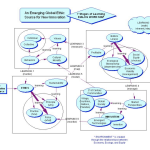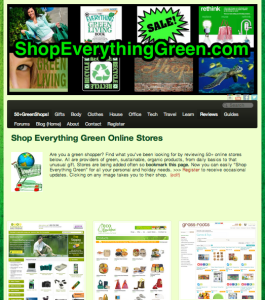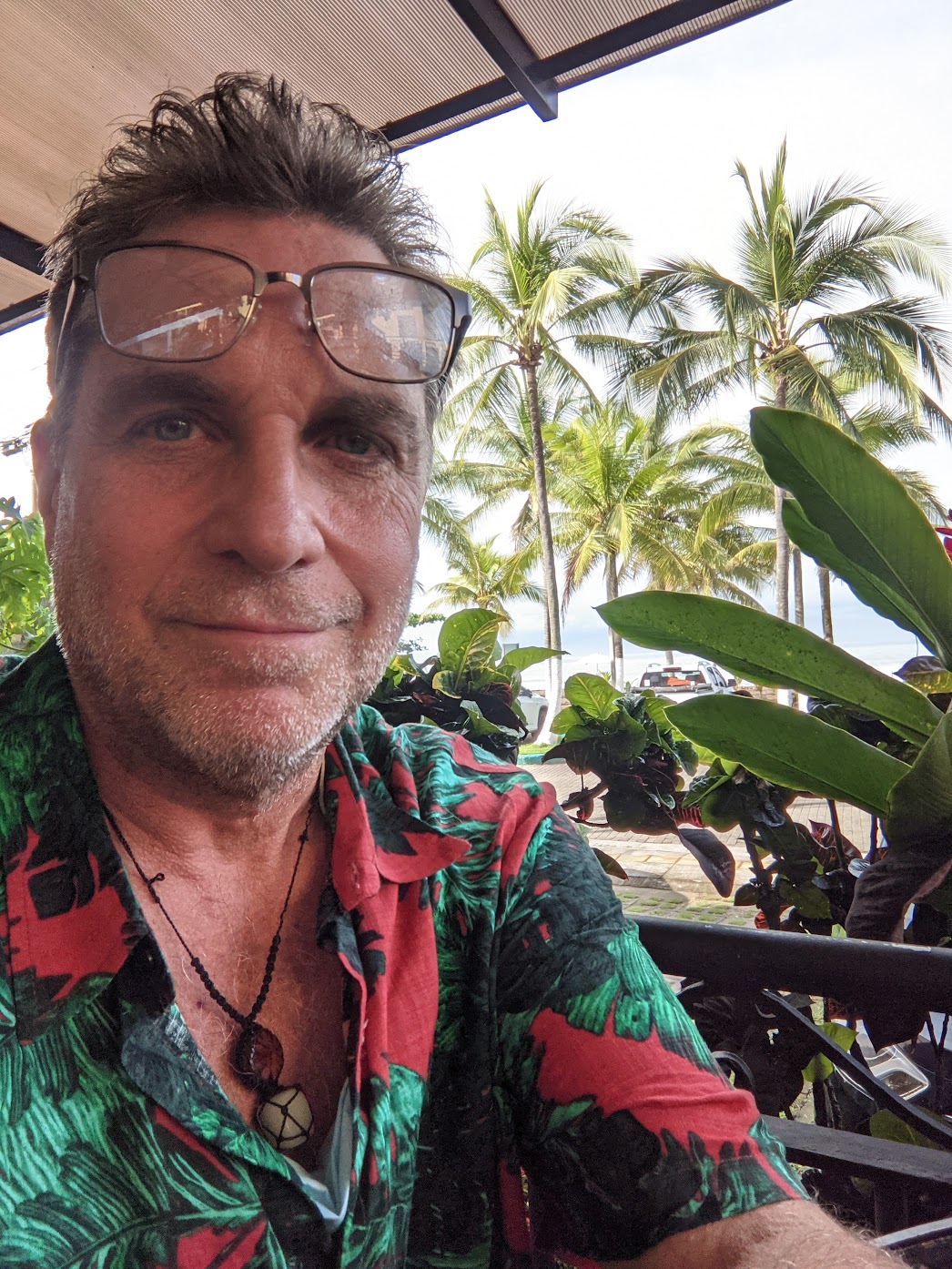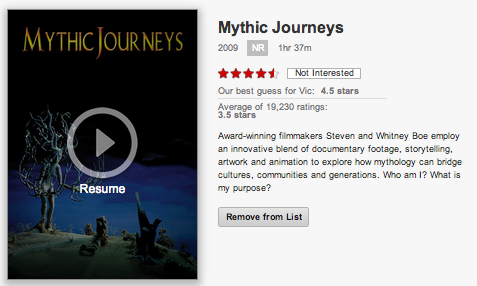Ethics to Innovation Article
By Vic Desotelle and Michael Kaufman
Table of Contents
- Introduction
- The Ethics/Innovation Relationship
- What are Ethics?
- Forces Creating Managerial Dilemmas (Principle Forces Creating Practical Dilemmas)
- What is Innovation?
- Innovative Wholes and Inventive Systems (Fractal Wholes vs Fractured Parts)
- The Emerging Global Ethic
- Innovation through Ethical Tension
- Sustainability: Bridge from Ethics to Innovation
- The New Innovation Strategy
- Architecting a Regenerative Commerce
- Conclusion

Ethics to Innovation
CONVERSATION WORD MAP
.
.
Introduction
In today’s business climate there are several forces intersecting in such a way as to create a tension that puts business executives, managers and employees into situations where they face an ethical dilemma. This dilemma could be summarized by the following question:
How do we do the right thing while at the same time balance the needs of all our stakeholders (investors, employees, customers and suppliers)? What is the right thing to do?
The recent events involving Enron, MCI/Worldcom, Global Crossing, Quest, Arther Andersen, and Tyco, (to name just a few) are examples of the negative consequences of actions taken by executives that face this dilemma.
These actions and the resulting surge of policies and public outcry to rebuild the faith in business and business people have created the conditions for what we call an emerging global ethic. This white paper explores the concept of this emerging global business ethic and the link between this ethic and innovation.
Forces Creating the Dilemma
The forces at work to create this dilemma are:
• an increasing quality of life,
• the transformation of organizational cultures,
• the limits of a hierarchic model
• increasing external competitive forces, and
• the short-term demands of Wall Street
Over the past 20 years, a large strata of western society has experienced an increase in personal wealth and an improvement in the quality of life (even though average incomes have remained basically constant during that period). Abraham Maslow pointed out in his hierarchy of needs (in the 1960’s), as people have their basic needs for food, shelter and clothing met they will tend to move up this hierarchy people feel safe, the quality of life improves and people have a tendency to feel the need for belonging and mastery of a task and ultimately the desire to be ‘all they can possibly be’
(self-actualization).
During this same period of time, businesses have been under-going a slow transformation that reflects this rise up the hierarchy of needs by executives and management. Simply put, for many businesses this transformation translates into a desire to bring the corporate mission in-line with the personal needs and values of the practitioners of the business.
This transformation, while desire-able and necessary for the enterprise to support the individual in achieving self-actualization, has a tendency to bump into the operating model of the organization. Most businesses (most organizations) in the west have been structured using a hierarchic organizational model, which, at its essence, uses the underlying operating principles of command and control to influence behavior. The command and control model of organizing conflicts with the rise up the hierarchy of needs and creates an internal organizational pressure that needs to be resolved in some way.
At the same time companies are experiencing tremendous pressures from the marketplace. Competition is increasing constantly and the pressure from Wall Street on public companies for short-term results to produce quarterly numbers (a short-term focus) is immense. Combine this internal organizational pressure with these external pressures and we find ourselves in a business environment where ethical dilemmas are plentiful.
What is Ethics?
Ethics and their underlying values are core beliefs which develop a person’s character and shape their actions. Most often these underlying beliefs are unconscious, unseen and unknown by the individual but make themselves known through their actions. An individual’s ethics and underlying beliefs come from their upbringing and are influenced significantly by their socialization (school, work, church, community, nation, etc.).
Individuals have ethics. Organizations have cultures. When young people come together in groups to accomplish something we call them gangs. When adults come together into a group to accomplish something we call it an organization. In either case, groups themselves don’t actually have ethics or values – they have a culture. This culture is created by a combination of the environment the organization is in, the structure of the organization, what the organization is attempting to accomplish, and the underlying beliefs of its members. Organizational culture can influence individual behavior in significant ways – in either a positive sense or a negative sense. The organizations cultural influence can be reinforcing (uplifting) or destructive and often both ways simultaneously.
The need to examine ethics in organizations has arisen from the complexity of business activities. The golden rule, “Do unto others as you would have them do unto you”, could be one way to articulate what has been the unspoken guiding value/ethic for western business. However, the nature of business in the 21st century is complex, global, professionally demanding and constantly changing. Therefore the demands on individuals and groups of individuals (teams, departments, organizations) are much higher and more complex. These demands require individuals and organizations to make a conscious effort to articulate a clear set of ethics/values to guide behavior for success in this kind of climate.
An Emerging Corporate Ethic
Since the advent of the ‘global marketplace’ there is a greater need for developing standards for global commerce. Since ethics are core beliefs, and influence behavior as well as communication, it is becoming increasingly necessary to develop a global standard, a global ethic, that facilitates commerce across many levels – transactions, collaboration, strategic partnering – and provides high quality goods and services for consumers.
In addition to the forces mentioned earlier there are several trends in the business environment converging to create what we call ‘an emerging global ethic’.
• The trend towards product quality and customer satisfaction
• The trend towards greater professionalism, autonomy and responsibility
• The trend for managers to become leaders and facilitators
• The trend of businesses being organized more towards teams, networks, and flatter structures
• The trend towards creativity and innovation for competitive advantage
• The trend towards the globalization of business
• The trend towards co-opetition (companies competing and collaborating simultaneously)
• The trend towards sustainability (triple bottom line economics)
These trends challenge the traditional corporate structure and bring forth the need for organizations to transform their work environments from top down, hierarchic organizations and organizational cultures into more flexible, emerging and self-organizing enterprises that are places of learning and creativity.
This transformation brings with it the need to re-evaluate existing values and define new values/ethics that are in line with and enable global commerce. We think this transformation and these trends set the stage for the emerging global ethic.
At the root of this new corporate ethic is a shift in ‘what a company thinks’ and ‘how it thinks’ which leads to a shift in ‘what a company actually does’.
New Strategies
Once we begin to shift ‘what we think’ and ‘how we think’ we begin to shift what we do. What businesses do is typically articulated as strategy and defined in operations.
The new corporate ethic is at the heart of shifting corporate strategies. These new strategies get articulated into the organization’s operations in the form of principles, policies, and practices. These new strategies also get articulated in an organization’s structure.
Ethical Principles
YES: A set of collectively chosen values that guide the actions of a company
NO: A list of corporate declarations that determine the direction of the company
Ethical Practices
YES: Decisions that are made as a result of managing day-to-day activities
NO: Choosing between the right and wrong thing once an incident has occurred
Ethical Policies
YES: Monitors the differences between chosen principles and actual practices
NO: Determines the legal fate of an individual or group after making improper choices
A company’s operations is a direct connection between its underlying beliefs and its actions. “The purpose of a system is what it does.”
We can always know (or extrapolate) from actions what the underlying beliefs are. In order to be successful in today’s global marketplace beliefs and actions must be in alignment with this new, emerging, global standard. As a consequence of this new, emerging, global ethic, companies are adopting new strategies and business models.
New Strategies include:
• Triple bottom line economics
• Sustainability
• Continuous Innovation
• Co-opetition and Collaboration
Sustainability
Of these new strategies, sustainability has the potential to provide the most far reaching value economically, socially and environmentally. We think sustainability is an important part of the emerging global ethic.
The basic definition of sustainable development was stated in 1987 by the World Commission on Environment and Development’s publication Our Common Future and reads as follows:
“Humanity has the ability to make development sustainable – to ensure that it meets the needs of the present without compromising the ability of future generations to meet their own needs. The concept of sustainable development does imply limits – not absolute limits but limitations imposed by the present state of technology and social organization on environmental resources and by the ability of the biosphere to absorb the effects of human activity.”
G.H. Brundtland (Chair), Our CommonFuture,
World Commission on Environment and Development, Oxford University Press, New York, 1987.
The Natural Step, a non-profit organization dedicated to helping businesses and governments integrate sustainability to their core strategies and operations has developed four basic principles for a sustainable society:
The Four System Conditions
In a sustainable society, nature is not subject to systematically increasing:
1. concentrations of substances extracted from the earth’s crust;
2. concentrations of substances produced by society;
3. degradation by physical means;
and, in that society. . .
4. human needs are met worldwide.
There are many more definitions for sustainable development (and sustainability in business) which is leading a number of organizations to explore the development of new voluntary standards. In the United Kingdom there are several sustainable development standards being trialled by UK companies. These include: AA1000 (developed by the Institute for Social and Ethical Accountability), the Global Reporting Initiative (developed by a wide range of international organizations), ISO14001 (International Standards Organization) and Project Sigma (a sustainability management standard under development by the British Standards Institution, Forum for the Future and others).
There are significant opportunities available to businesses for actively pursuing more sustainable approaches. These include:
• save costs by reducing environmental impacts and treating employees well;
• increase revenues through environmental improvements and benefits to the local economy;
• reduce risk through engagement with stakeholders;
• build reputation by increasing environmental efficiency;
• develop human capital through better human resource management;
• improve access to capital through better governance.
Innovation
Neither of the definitions of sustainability presented above is prescriptive. Both definitions allow for, and stimulate the creativity of practitioners to develop their own appropriate responses and innovate to create the right sustainable solutions in their unique organizational contexts.
In our white paper on bottom line innovation (InnovationLabs, July, 2002) we defined 32 innovation targets (see table on right). If an organization adopts a sustainability framework we can add several new opportunities for innovations to this list. Opportunities to innovate materials, methods, machines, new markets, and new business models can be added. Shifting to a sustainability provides business with a framework to move from a basic problem solving modality to one that incorporates innovation into the very fabric of the enterprise.
Summary
Today’s troubling business climate requires that organizations have a thorough understanding of ethics so that appropriate decisions can be made when dilemmas arise. But ethics is more than knowing what to do once a problem arises. Appropriate ethical action can only be applied when company managers are committed to leading from an ethical rightness based on values, not just the law. And, a broader education on ethics can help to reduce legal action by teaching managers how to make clear decisions early in the process.
To heal ethical dilemmas, organizations must commit to a collective values alignment process that acknowledges the transitional times we are now going through. This values alignment process should take into consideration the emerging global ethic and the shifting to economic models that contain sustainability as part of their framework.
An organization’s culture will reflect management’s commitment to a set of values. If management’s commitment includes understanding and embracing sustainable frameworks, companies will then be in a position to make innovations in strategies, processes, structures, products and services — making innovation a core capability of the organization.
——————————————-
Further notes to incorporate:
-Sustainability limits create infinite possibilities (fractal behavior)
-During times of great change, there is an emphasis on ‘principle’ over ‘policy’ (‘practice’ is the bridge of activity that is always present)
-[Also see inKNOWvate website for prewritten material]
-3P’s as principle-based foundational model for self-regulating ethical management
-3E’s (trinity) 7Ee’s as principle-based foundational model for self-regulating innovation management
-The 3 archetypes of Regenerative Commerce transfer principle concepts into practical action (Archetypes are a result of primary needs interacting to create an identity (such as Regenerative Commerce set of 3))
-Bringing innovation into an organization as part of a ‘knowledge management’ process
-Today’s ethics management processes are geared around informing of old policy (systemic) without communicating new principles (wholistic). Thus, an acting manager gets caught in a quagmire of existing practices [based on policy measures … coming from existing old myth] when there is a need for new practices [based on principle map … emergent new myth].
-Ethics as catalyst to new ‘forms’ of innovation [note that ‘form’ is more about invention]
-Suggest this in ‘about’? … or have link at where fractal wholes are mentioned? … From fractured parts toward fractal wholes takes us into the discussion of organizational architecture (and later, organizational geometries which is one level beyond org. architecture)
-Relations to Fractal-wholes concept Relations to Fractured-systems concept
heart orientation head orientation
feminine archetype masculine archetype
knowledge management (as in head/heart integration) information management (head only management-result from adolescent brain coming into its own identity realization separation from heart occurs only to return later)
Organizational learning: (learning centrally webbed to entire whole, energy direction is bi-directional to/from teach/student) Organizational development: training (unidirectional and periphery and attached separately to each system)
inclusive of fractured systems non-inclusive of fractal wholes
singular boundary multi- boundaries
spherical relationships vectored relationships
whole can be realized through any part
nonlinear linear
infinite finite
parallel serial
whole/hole interplay
——————————————-
ABOUT
DiscoveryColabs and InnovationLabs describe abilities to innovate utilizing ethics as the catalyst to develop the necessary dynamically-adapting learning-based organizations.
Vic Desotelle, DiscoveryColabs.com
Michael Kaufman, Innovation Labs
.
.
.
 I started this website with intent to grow it as I can. To start here is a page with 50+ online green stores. Use it for daily shopping and especially for the holidays. More to come. Shopeverythinggreen.com
I started this website with intent to grow it as I can. To start here is a page with 50+ online green stores. Use it for daily shopping and especially for the holidays. More to come. Shopeverythinggreen.com


